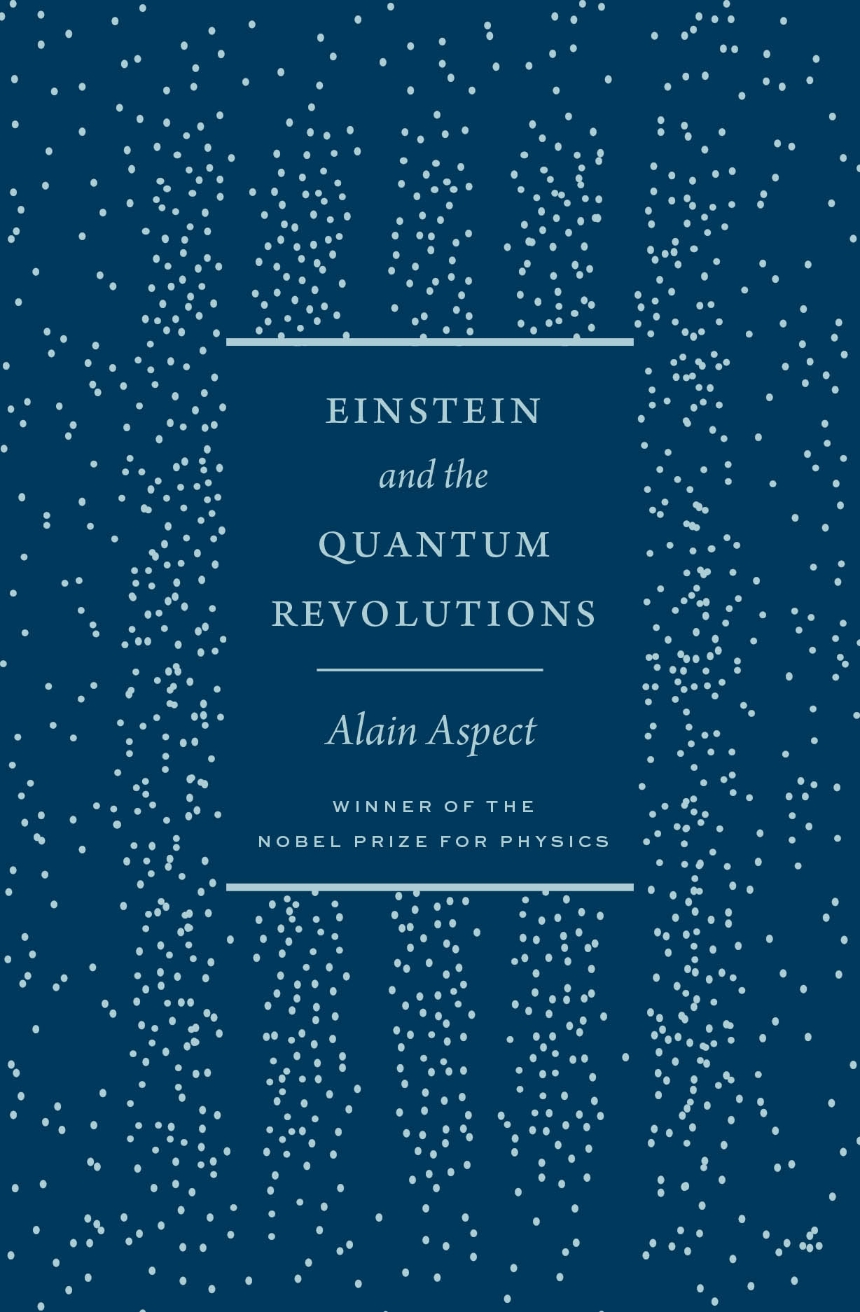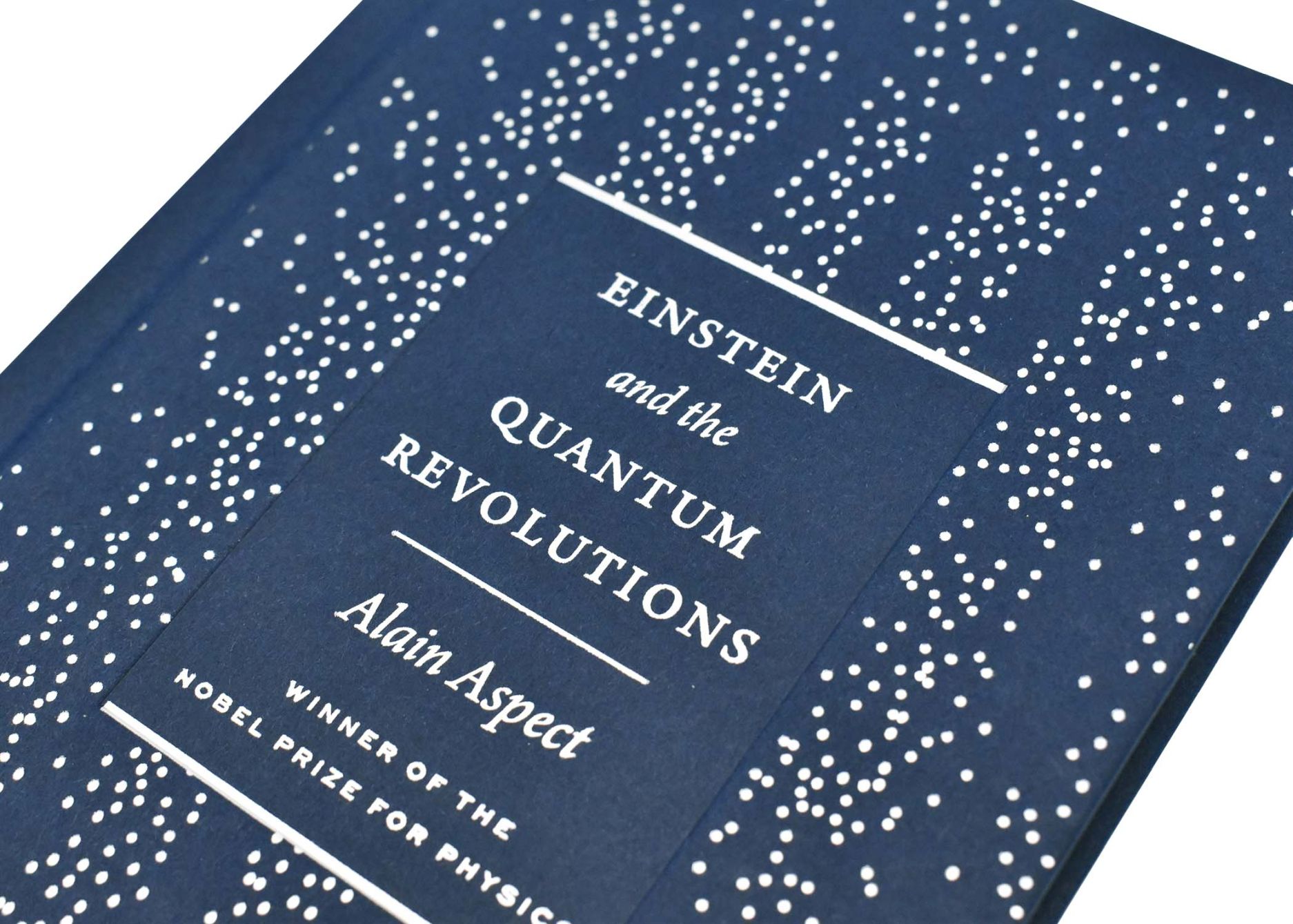Einstein and the Quantum Revolutions
At the start of the twentieth century, the first quantum revolution upset our vision of the world. New physics offered surprising realities, such as wave-particle duality, and led to major inventions: the transistor, the laser, and today’s computers. Less known is the second quantum revolution, arguably initiated in 1935 during a debate between giants Albert Einstein and Niels Bohr. This revolution is still unfolding. Its revolutionaries—including the author of this short accessible book, Nobel Prize–winning physicist Alain Aspect—explore the notion of entangled particles, able to interact at seemingly impossible distances. Aspect’s research has helped to show how entanglement may both upend existing technologies, like cryptography, and usher in entirely new ones, like quantum computing. Explaining this physics of the future, this work tells a story of how philosophical debates can shape new realities.
Reviews
Table of Contents
Two Quantum Revolutions
The First Quantum Revolution
Wave-Particle Duality
The Success of the First Quantum Revolution
The Second Quantum Revolution
Entanglement Measurement Experiments
The Manipulation of Quantum Objects
Quantum Information
Quantum Cryptography
In Search of the Limit
About the Author
Excerpt
What is a difficult problem? For a computer scientist or a mathematician working in this field, a difficult problem is one that requires a calculation time that increases exponentially with the size of the object under consideration. For example, internet security uses a coding called RSA, after Ron Rivest, Adi Shamir, and Leonard Adleman, who described the algorithm in 1977. RSA security is based on the impossibility of factoring a sufficiently large number into prime factors. Factoring into prime factors means, for example, breaking down the number 60 into 3 multiplied by 4 multiplied by 5. Factoring a large number takes considerable time because you have to try all the prime numbers less than the square root of the number.
This calculation difficulty is the foundation of security. A few years ago, on the internet, coding was done on 64-bit numbers. But, with today’s more powerful computers, with great effort and networking, we can crack the code. The number of bits is then doubled, going to 128 bits, and we can rest easy for ten years. Going to 256, we enjoy another ten years, and so on. A number of theoretical physicists, applied mathematicians, and theoretical computer scientists have discovered that certain difficult problems, such as the one just described, would become easier to solve if there were a quantum computer. For example, what is called Shor’s algorithm, after mathematician Peter Shor, would enable the factorization of a number in a time that would no longer increase exponentially with size, but in a more reasonable way: a polynomial increase.
To implement Shor’s algorithm, one would need a perfect quantum computer. What does that entail? It would use quantum bits, qubits, entangled with each other. To give a vague idea of what this means, we must first ask ourselves what an ordinary “bit” is. In a classical computer system, a bit is a value that can be either 1 or 0, but never both. One traditional way to think of the two states is as a light switch, on or off. But we might equally think of the states as a photon which can go either to one side of the beam splitter or to the other.
In the quantum world, a bit can also be 1 or 0. But here is the interesting part: it can also at the same time be 1 and 0, like the photon that goes to both sides of the beam splitter at the same time in the interference experiment. So, a quantum bit or “qubit” is one that can be put in a state that is a superposition of 1 or 0. If we now take two quantum bits and entangle them, we have access to a great wealth of states because we can have 0–0, 0–1, 1–0, and 1–1, and all the combinations of these four possibilities. If we take three qubits, we have eight basic possibilities (0–0–0, 0–0–1, and so on) as well as the combinations of all those possibilities. If we entangle ten quantum bits, we obtain about a thousand basic possibilities. With twenty, we get one million basic possibilities . . . That’s exponential growth!





